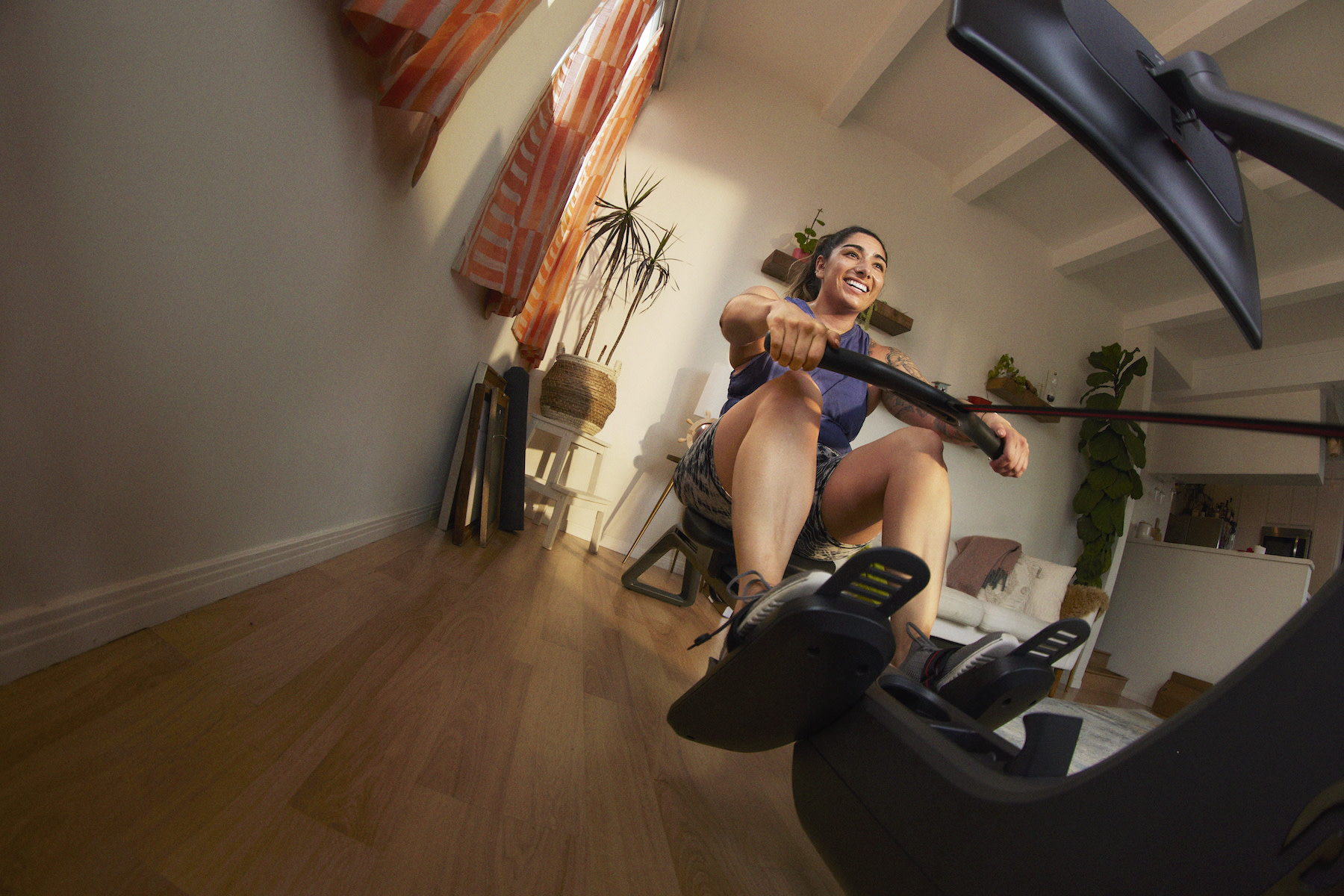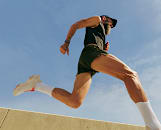What Is a Rowing Machine?
Is a Rowing Machine a Good Workout?
Is Rowing Better Than Other Cardio?
Benefits of a Rowing Machine Workout
How Long Should Rowing Workouts Be to See Benefits?
How To Use a Rowing Machine
Incorporating a Rowing Machine Into Your Workout Routine
Endurance and muscle building are just a couple of the wonderful benefits of rowing machines that keep people coming back for more. Interest in rowing machines has increased in recent years, thanks in part to fitness influencers demystifying how to use a rowing machine. Competitive events like the World Indoor Rowing Championships, which began in 2018, also now take place around the globe. So, what’s all the fuss and why do rowing machines offer so many workout benefits?
Discover more ways to reach your goals with Peloton
This article will let you in on almost everything you need to know, from proper form to the undeniable plusses of regular rowing. If you're looking to amp up your current workout routine, improve your posture and increase your overall fitness, a rowing machine workout may be perfect for you.
What Is a Rowing Machine?
A rowing machine works by mimicking the motion of rowing, such as how you might propel a canoe, raft, or kayak forward in the water. Creating an ultra effective workout from the comfort of your own home or workout space, a rowing machine like the Peloton Row comes with a variety of rowing workouts at different intensity levels—think core, full-body strength, high or low intensity training to name a few. And, the best part? The programs feature different landscapes to make you feel like you’re out on the water. You’ll also be able to see your personalized metrics after each workout to help you track your improvements and challenge yourself every time.

Peloton Row
Work 86% of your muscles in just 15 minutes.
Using a rowing machine is relatively easy—although you will want to receive guidance or training, at least initially, to ensure you’re using the proper form so the rowing machine workout best meets your fitness goals.
Is a Rowing Machine a Good Workout?
There’s a common misconception that a rowing machine only works your arms, but in fact, rowing is a great workout because it’s a full-body workout so it targets all the major muscle groups, including your arms, legs, back, and core. It's a fantastic low-impact, high-intensity cardio workout that challenges the heart and muscles in many ways. A rowing machine like Peloton Row provides a full-body cardio workout that works 86 percent of your muscles in a 15 minute session.
Perfect for all fitness levels, the benefits of rowing are varied and wide, including improving your cardiovascular health. A recent Harvard study found that rowing machines are not only good for health, but also highly effective in burning calories too, while another study found that rowing can improve strength over time too.

Is Rowing Better Than Other Cardio?
Every form of cardio from running to biking, dance to hiking, and indeed, rowing, all have their unique benefits that appeal to different needs and preferences. Depending on your fitness goals, you’ll want to find a form of cardio that delivers what you’re looking to achieve, and is something you’ll be dedicated to doing on a regular basis.
If you’re looking for a low-impact, strength-building cardio workout that utilizes the majority of muscles in your body, then rowing may well be the workout for you, compared to a high-impact, higher intensity cardio activity such as running. It may also be a better option over the elliptical if you want to do high-intensity workouts. It’s really down to what you’re looking to achieve from your workout.
Let’s dive into even more rowing machine benefits.
Benefits of a Rowing Machine Workout
Rowing machines have many benefits, and you don't have to be a professional or competitive rower to enjoy them. Because rowing uses both your upper and lower body with every stroke, you'll strengthen and sculpt muscles while improving your endurance.
Here are seven compelling rowing machine workout benefits to show you why you should consider adding it to your workout regimen.
1. They’re Easy to Use
Rowing machines are intuitive and easy to use, so there isn’t a steep learning curve to contend with. Of course, you’ll want to make sure you’re using proper form and the right amount of resistance based on your workout goals. For example, if you’re just starting out, it’s a good idea to start with a lower resistance level and work your way up as you become more comfortable with the rowing movement and its effects on your body.
2. Rowing Works Your Arms, Legs, Back, and Core
Rowing is one of the few fitness activities offering a total body workout. It doesn’t just work your arms, it also requires leg and upper body work, as well as targeting your core. Here are the areas of the body and muscle groups you can hit in just one rowing session:
Legs: Your legs–including your quads, hamstrings, calves, and glutes,are the main power source during the drive phase of the rowing stroke. This is when you drive, or push, yourself backward as your legs straighten out ahead of you. (At the same time, you’re also pulling your arms back toward your chest in a smooth, controlled motion.)
Back: Your back muscles, specifically the lats, traps, and spinal erectors, are engaged during the drive phase of the rowing stroke. At the completion of the drive phase, you should be at the finish, leaning back slightly, with legs extended and arms close to your chest.
Arms: Your forearms, biceps, and triceps are used during the drive and recovery phases of the stroke as you pull your arms toward you then extend them away from you.
Core: The core muscles, including your abs, obliques, and pecs are engaged throughout the entire rowing stroke to help stabilize the body and maintain proper posture.
Shoulders: You engage your deltoids with every stroke on a rowing machine, helping to rotate your shoulders and engage your upper back muscles.
3. It’s Not a Weight-Bearing Exercise
Regardless of your fitness level, it’s important to avoid overwhelming your knees and other weight-bearing joints. This is where efficient, low-impact, high-intensity workouts–like rowing, come into play.
Rowing burns a ton of calories without stressing your joints. You control the pace and movement, making it particularly helpful for beginners and those recovering from an injury.
High-impact exercises have their place in the fitness world. Still, low-impact workouts can be just as effective–and your joints will thank you for giving them a break from time to time. Or all the time; it's entirely up to you!
4. There’s a Variety of Workouts
A rowing machine is versatile and can be used for a variety of workouts, including interval training, endurance training, and strength training.
Rowing also allows you to reach your goals quickly with short, intense workouts. You don’t need to run for hours. Since rowing works your entire body, you'll target all major muscle groups and get a killer cardio workout.
For example, quick workouts on the rowing machine counts as high-intensity interval training (HIIT), as long as your intensity is high enough. HIIT workouts assist you in burning more calories, even after you’ve finished working out. Even in very short bursts, HIIT is beneficial to your health. If you find yourself without the time to exercise, 15 minutes on the rower will do the trick.
5. Rowing Provides Stress Relief
Rowing is an effective way to relieve stress and tension, making it great for mental wellness. Consistent, repetitive exertion like rowing can help put you in the zone, offering much-needed relief from the stress and anxiety of your daily grind.
6. It Breaks Up the Cardio Monotony
If all the usual cardio routines are becoming boring, or you simply want more diversity in your fitness routine, rowing offers a fantastic alternative to the usual cardio exercise. Not only is it comparable to many other cardio routines, but rowing is superior to them in many ways, especially because it works the entire body without unnecessary stress on the joints. Rowing is an excellent way to break up the workout monotony.
7. Improves Posture
Sitting all day at a computer or spending hours looking down at a phone does your posture no favors. Rowing can counteract these and other activities that can keep you in a hunched-over position. Rowing provides an excellent upper spine workout, targeting the upper back and shoulder muscles with every stroke to improve your upper back posture.

How Long Should Rowing Workouts Be to See Benefits?
First and foremost, you want to engage in a workout of a length that will benefit your body.
Rowing sessions are often shorter than other types of cardio exercise because rowing efficiently targets multiple muscle groups in a high-intensity way. In this way, even 10- or 15-minute workouts on a rowing machine can be highly effective.
A single rowing stroke works your hamstrings, core, arms, glutes, and back muscles. A mere 10 minutes adds up to about 200 strokes, at which point you should be sweaty and exhausted, in an entirely invigorating way. You may wish to vary the amount of time you spend on the rowing machine, depending on your pace and intensity level.
How To Use a Rowing Machine
As with any fitness equipment, making sure you’re using it correctly is key to avoiding injury and ensuring you get the most from your workout. Fortunately, rowing machines like Row are super easy and intuitive to use, you’ll just need to perfect your rowing form by putting in the practice.
Start by making sure the balls of your feet are securely in place and the straps are holding your feet in. Sit up with a straight back and engaged core, and push back with your lower body and upper back, pulling your hands into your chest and straightening your legs. Then, return to your starting position by bending your knees and driving your arms back towards the base. Once you’ve got your form down, repeat and start to build up your strokes. As you increase your pace make sure you’re pushing out with more power rather than pulling your arms in faster.
A few common postural issues to avoid include letting your shoulders do the work or hunching forwards, raising your arms too high—they need to be straight forward just below the chest, don’t grip too hard as that will create tension, and make sure your neck and jaw muscles are relaxed so you’re not clenching them. Brush up on your technique with these rowing form tips.
Looking for real-time feedback? Peloton Row gives you feedback on your form by highlighting areas of your body on-screen in red to show you where to adjust.
To track your progress, keep an eye on your stats during each rowing workout. The Row makes that easy by displaying key metrics including total strokes, split pace, output, and stroke rate directly on the touchscreen. App+ Members who don't have access to a Row can still take interactive classes with their favorite Peloton rowing instructors (and accurately log their stats). These Members have the ability to pair the Peloton App with third-party rowers using Bluetooth to view actionable metrics (such as stroke rate, strokes, pace, and distance) from Peloton rowing classes directly in their profile.
Incorporating a Rowing Machine Into Your Workout Routine
Once you give rowing a try, you may be surprised at just how easy it is to incorporate rowing into your usual fitness routine. Whether you’re using a rowing machine in your home gym, like Peloton Row, or you’re trying Row workouts through the Peloton App on the machine at your local gym, it’s one of the best ways to amp up your fitness plan or start a new one. Check out some of the rowing circuit workouts available on the App.
This content is for informational and educational purposes only and does not constitute individualized advice. It is not intended to replace professional medical evaluation, diagnosis, or treatment. Seek the advice of your physician for questions you may have regarding your health or a medical condition. If you are having a medical emergency, call your physician or 911 immediately.














